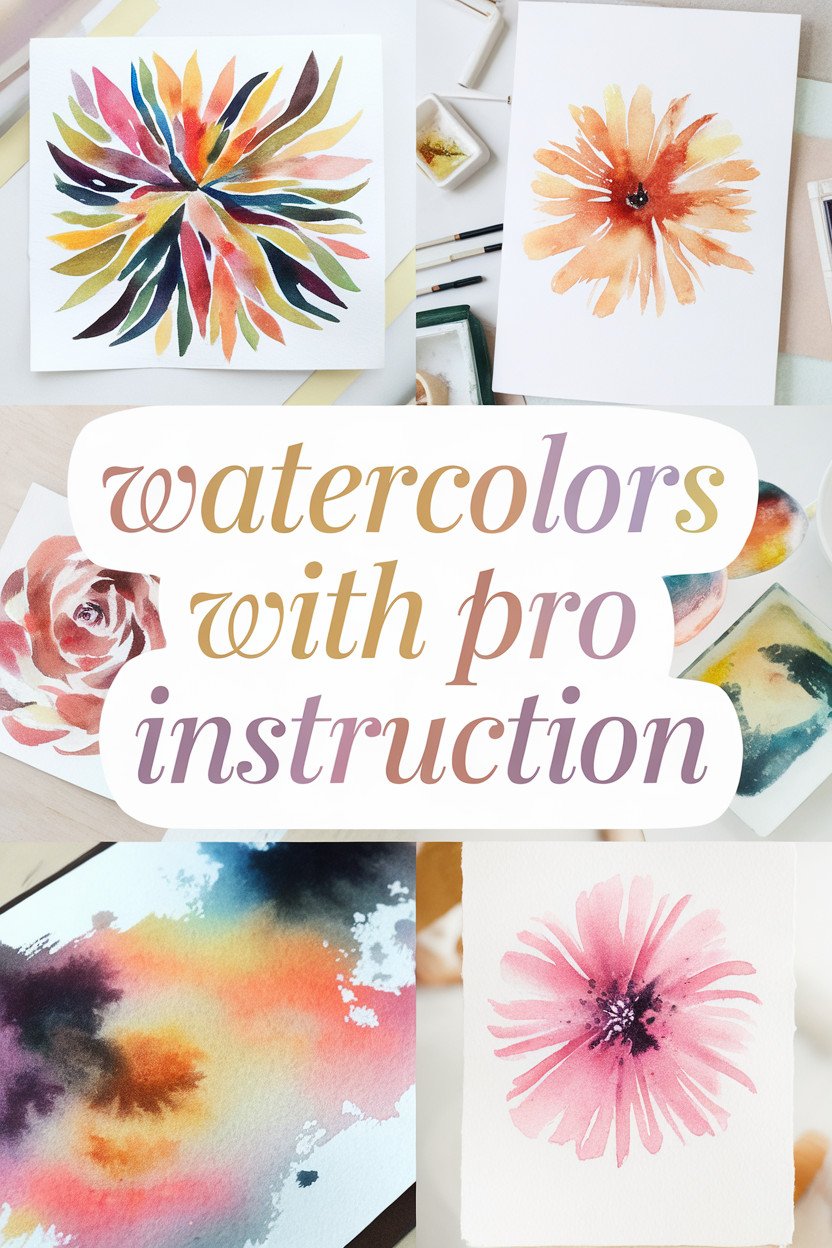If you have a passion for watercolor painting, you know that creating beautiful artwork with this medium requires skill, patience, and a little bit of magic. With the right tips and techniques, you can unleash your creativity and bring your vision to life on paper. In this section, we’ll explore expert watercolor painting tips, essential techniques, and step-by-step tutorials to help you improve your skills and create stunning works of art.
- Watercolor painting requires skill, patience, and creativity
- Expert tips and techniques can help you improve your skills and create beautiful artwork
- Essential watercolor techniques include washes, glazes, wet-on-wet, and wet-on-dry
- Step-by-step tutorials can guide you through the process of creating stunning watercolor paintings
- Experimenting with different styles, landscapes, colors, washes, and mixed media can help you find your unique artistic voice
Getting Started with Watercolor Painting
If you’re new to watercolor painting, welcome to the wonderful world of creativity! With a little practice, patience, and inspiration, you’ll be amazed at the beautiful artworks you can create. Here are some tips to help you get started:
- Gather the necessary supplies such as watercolor paints, paper, brushes, and water containers.
- Experiment with different watercolor techniques such as washes, wet-on-wet, and dry-brushing to find what works best for you.
- Don’t be afraid of mistakes! Watercolor painting can be unpredictable, but that’s part of its charm. Embrace the happy accidents and surprises.
- Show off your style with unique watercolor painting ideas. You can use photographs, nature, or your imagination to create stunning artworks.
- Take advantage of the wealth of resources available online and in books. There are plenty of watercolor tutorials, tips, and techniques to help you improve your skills and find inspiration.
Remember, watercolor painting is a journey and a process. Enjoy every step of the way and let your creativity flow!
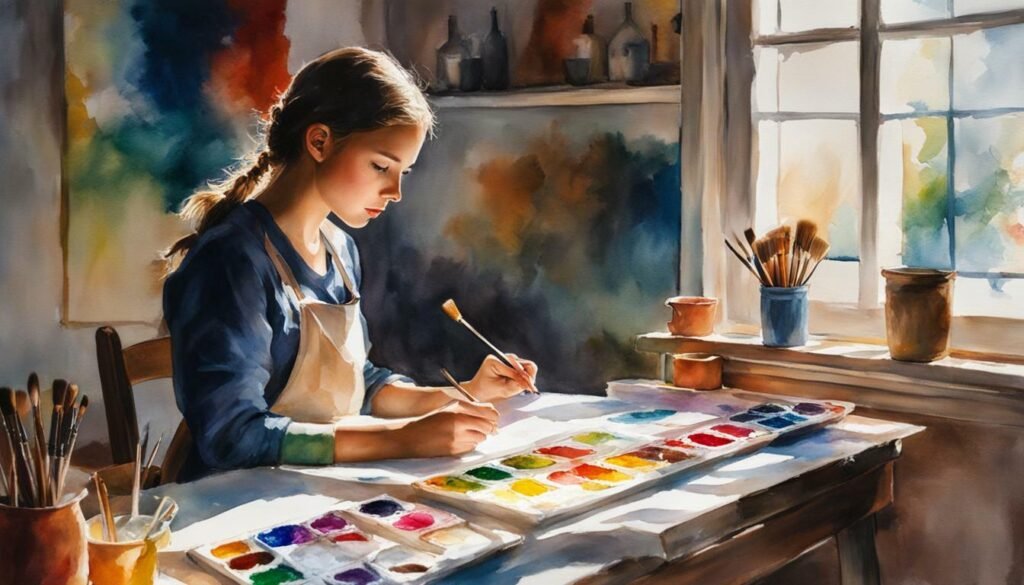
If you want to create beautiful watercolor paintings, mastering essential techniques is a must. Whether you’re a beginner or an experienced artist, these techniques will help you improve your skills and take your art to the next level.
Washes
Creating smooth and even washes is an essential watercolor technique. To start, wet the paper with clean water, then apply a diluted wash of paint. For a gradient effect, apply a darker wash to one end and a lighter wash to the other, and blend the two together while the paper is still wet.
Glazes
Glazes are thin layers of paint applied over a dried layer. They allow you to create rich colors and subtle variations. Apply a glaze using a large brush, and use a light touch to avoid lifting the underlying layer of paint.
Wet-on-Wet
Wet-on-wet is a popular technique that involves applying wet paint onto wet paper. This technique creates soft edges and blends colors seamlessly. Start by applying a wash of water to the paper, then drop in diluted paint and let it spread naturally.
Wet-on-Dry
Wet-on-dry is the opposite of wet-on-wet. It involves applying wet paint onto dry paper. This technique allows you to create sharp edges and precise details. Start by painting a dry layer of color, then add another layer once it dries.
Dry Brushing
Dry brushing involves using a dry brush to apply paint to dry paper. This technique creates texture and adds depth to your artwork. Load the brush with paint, then remove most of it on a paper towel. Use short, quick strokes to apply the paint.
Salt and Alcohol Techniques
Salt and alcohol techniques create unique textures and patterns in watercolor paintings. Sprinkle salt onto wet paint to create a speckled effect, or apply rubbing alcohol to wet paint for a more dramatic effect.
- Practice these essential techniques to improve your watercolor painting skills.
- Experiment with different combinations and variations of these techniques to create unique effects.
- Remember to have fun and enjoy the creative process!
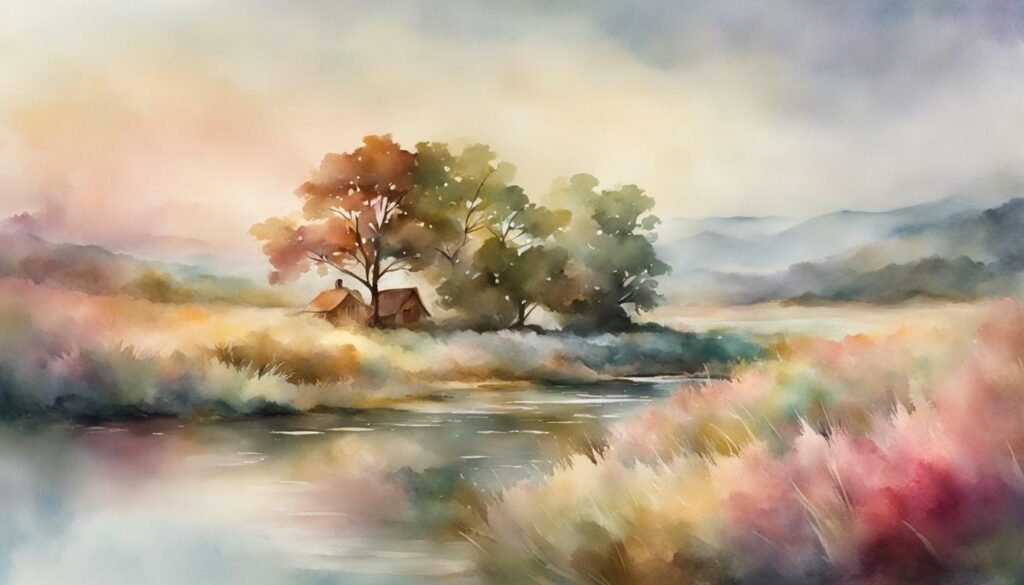
Watercolor painting allows for a wide range of styles, from realistic landscapes to abstract compositions. Here are some watercolor painting ideas to help inspire your own unique style:
- Create a portrait series featuring your family and friends.
- Paint your favorite animals or pets in a whimsical, cartoonish style.
- Experiment with color blocking and geometric shapes to create abstract compositions.
- Paint a series of seascapes to capture the movement of the waves and the changing colors of the sky.
- Explore the beauty of urban landscapes by painting cityscapes and street scenes.
- Use negative space to create dramatic, minimalist compositions.
- Combine watercolor with mixed media, such as ink or pastels, to add texture and interest to your paintings.
Keep in mind that the possibilities are endless when it comes to watercolor painting inspiration and ideas. Don’t be afraid to experiment and find your own unique style.
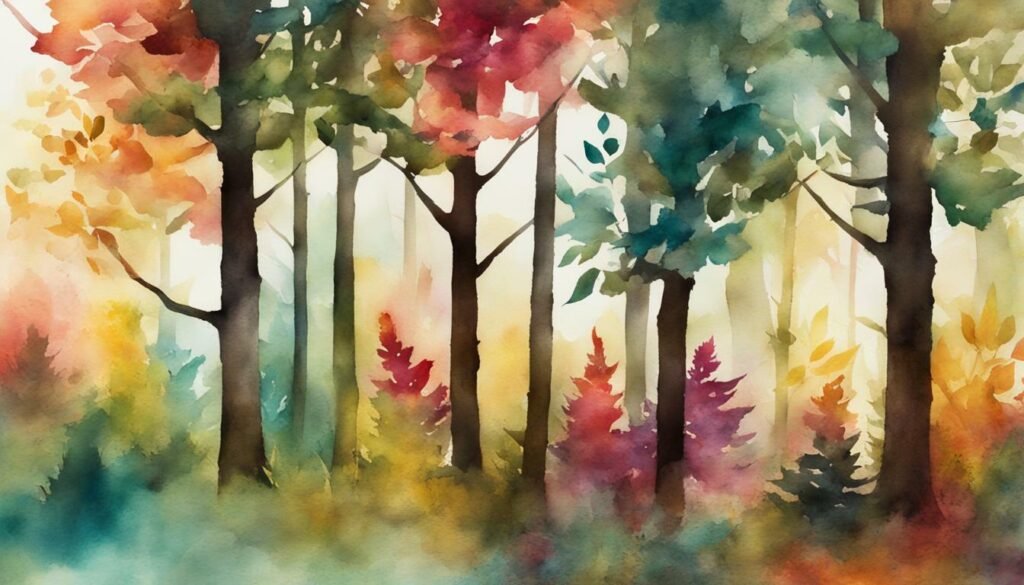
If you’re looking to create breathtaking landscapes with watercolor, there are several techniques you can use to achieve stunning results:
- Use a light wash as your base layer, gradually building up the colors and details in layers.
- Experiment with different brushes and strokes to create texture and movement. For instance, try using a fan brush to create foliage or a dry brush technique to add texture to rock formations.
- Use masking fluid to preserve areas of white paper for highlights or to create crisp edges for details such as tree branches.
- Play with the intensity of color to create depth and dimension in your landscapes. For example, you could use a lighter color in the background and gradually intensify the color in the foreground to create a sense of depth.
Remember to also consider composition and perspective when painting landscapes. Take the time to plan out your painting, considering the placement of objects, the direction of light, and the overall mood you want to convey.
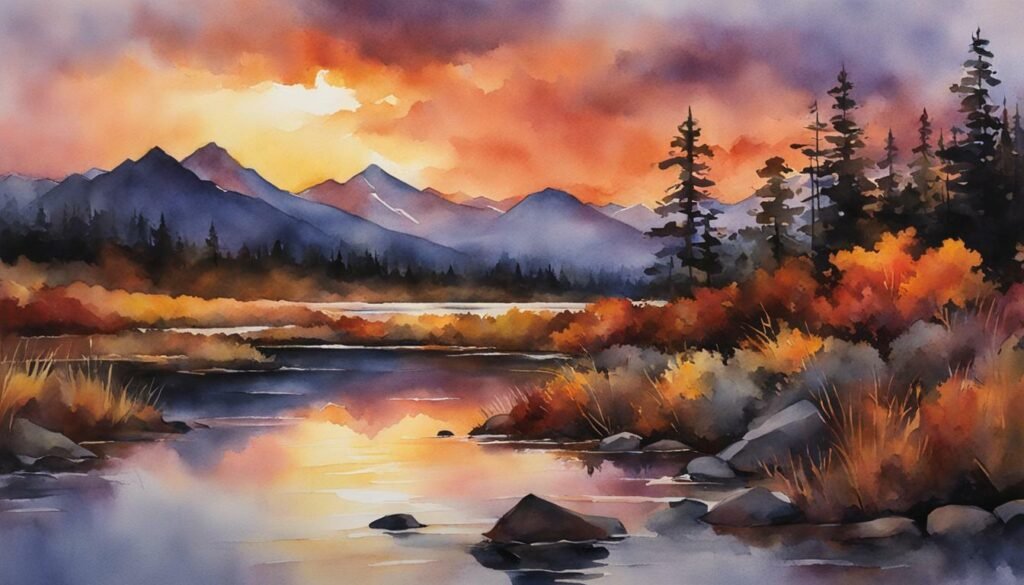
Light and shadow play a crucial role in creating depth and realism in your watercolor paintings. By effectively using these elements, you can bring your artwork to life and make it more visually appealing. Here are some techniques to help you capture light and shadow in your watercolor paintings:
- Use a light wash to create the base layer for your painting, then build up layers with darker colors to create shadows.
- Experiment with different painting techniques to create texture and depth in your paintings.
- Be mindful of the direction of light in your painting and use it to create highlights and shadows.
- Blend different colors to create a smooth transition between areas of light and shadow.
Remember to practice and experiment with different techniques to find what works best for you. With time and patience, you can master the art of capturing light and shadow in your watercolor paintings.
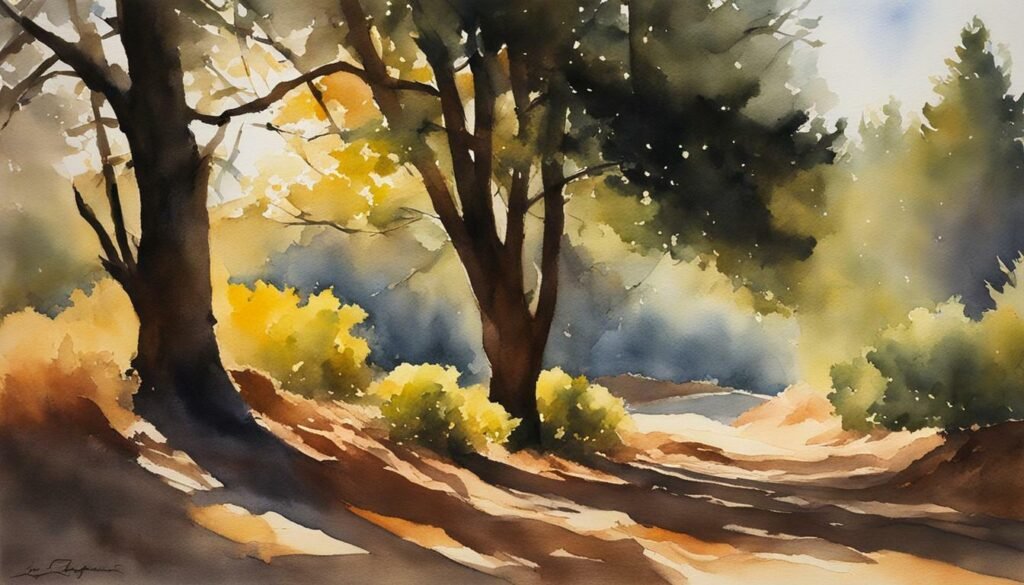
Color is an essential element of any watercolor painting, and achieving vibrant colors is crucial if you want your artwork to stand out. Here are some tips and tricks for getting the most out of your colors:
- Use high-quality paints: The better the quality of your paints, the more vibrant and intense the colors will be.
- Experiment with color mixing: Understanding color theory and how colors interact with each other is key to creating harmonious color palettes.
- Layer your colors: Building up multiple layers of color can create depth and richness in your paintings.
- Make use of white space: Leaving areas of your paper blank can help make your colors pop and add contrast to your artwork.
- Try different techniques: Techniques like wet-on-wet, dry-brushing, and salt sprinkling can all create unique effects that add interest and vibrancy to your paintings.
By incorporating these tips and tricks into your practice, you’ll be able to create stunning watercolor paintings with bold, vibrant colors that are sure to impress.
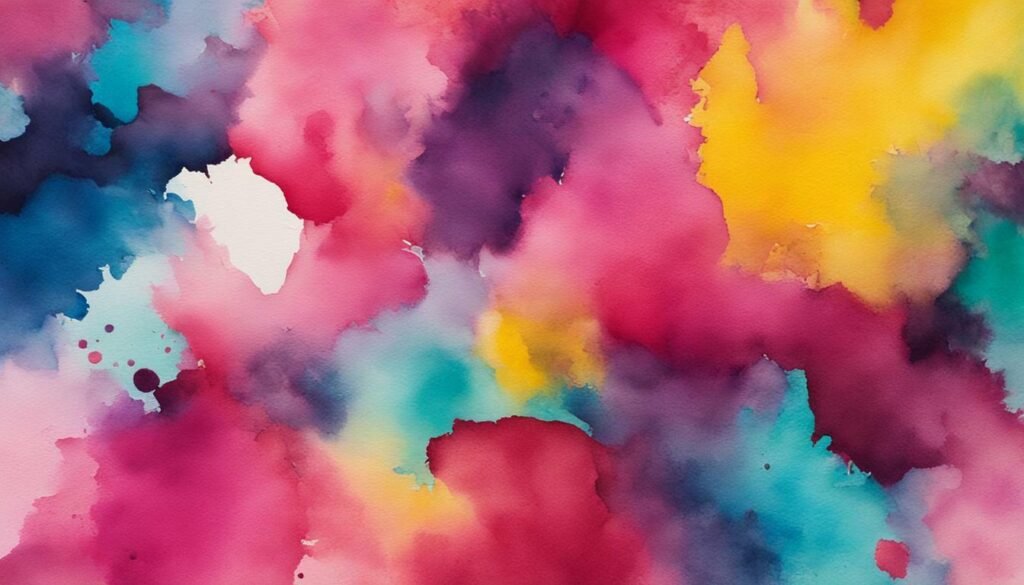
Creating a smooth wash is fundamental to watercolor painting. Follow these tips to master this technique:
- Ensure your paper is stretched or taped down to prevent warping.
- Use a large brush, such as a mop brush, to cover a large area quickly.
- Wet the area you want to paint with clean water first, then apply the paint quickly and evenly.
- Start with a light color and gradually add more pigment for a darker shade.
- Blend different colors while the wash is still wet to create beautiful gradients.
- Avoid overworking the area, as this can result in unwanted texture and blotchiness.
Practice creating washes with different consistencies and colors to achieve the desired effect.
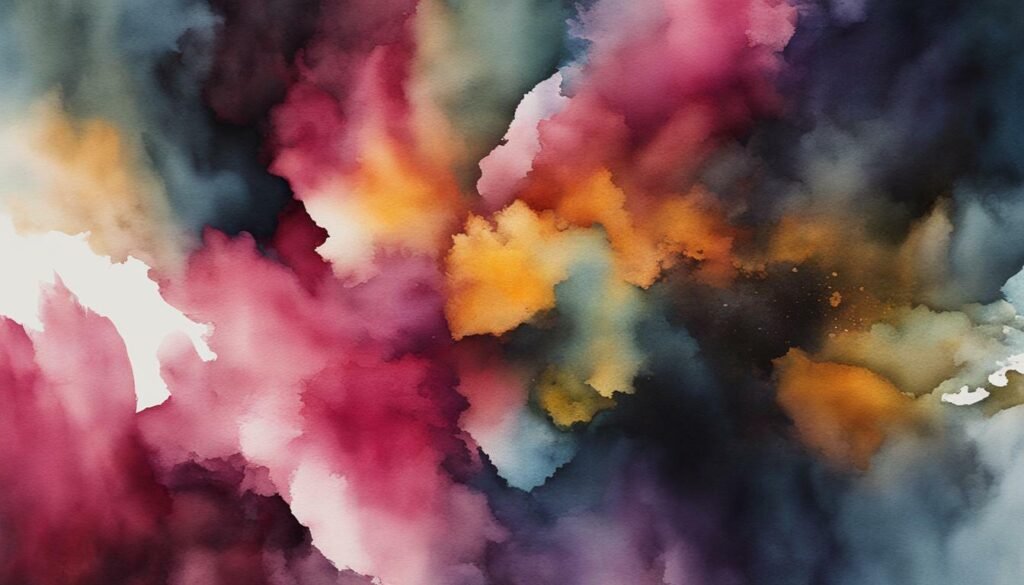
To create a truly stunning watercolor painting, it is important to pay attention to the details and textures within the artwork. Here are some techniques to add depth and interest to your paintings:
- Use dry brushing to create texture and add dimension to your painting.
- Experiment with salt and alcohol techniques to create unique and beautiful effects.
- Add texture by using wax resist or frisket to mask certain areas of your painting before adding color.
Remember to practice these techniques on a separate piece of paper before incorporating them into your final artwork. This will help you get a feel for the technique and ensure that it creates the effect you’re looking for.

As you add details and texture to your watercolor painting, pay attention to the overall balance of the piece. It’s important not to overdo it and take away from the overall aesthetic of the work. With practice and experimentation, you can find the perfect balance and create breathtaking watercolor artwork.
Experimenting with Mixed Media in Watercolor
Watercolor painting is a versatile and expressive medium that can be combined with other materials to create unique and eye-catching artwork. Mixing media can enhance the aesthetic appeal of your paintings and bring new dimensions to your artwork. Here are a few tips and techniques to help you get started:
- Try adding ink to your watercolor paintings for a bold and dramatic effect. Use a waterproof pen or ink and experiment with different techniques such as stippling or crosshatching.
- Combine acrylic paint with your watercolor for added texture and depth. Acrylic paint is thicker than watercolor, so be sure to use it sparingly and blend it well with your watercolor washes.
- Integrate pastels into your watercolor artwork to achieve a soft and velvety effect. Layer pastels over your watercolor washes or use them to add highlights and details to your paintings.
Remember to experiment and have fun with different mixed media combinations. Incorporating new materials and techniques into your watercolor paintings can help you develop your style and push the boundaries of your artwork.
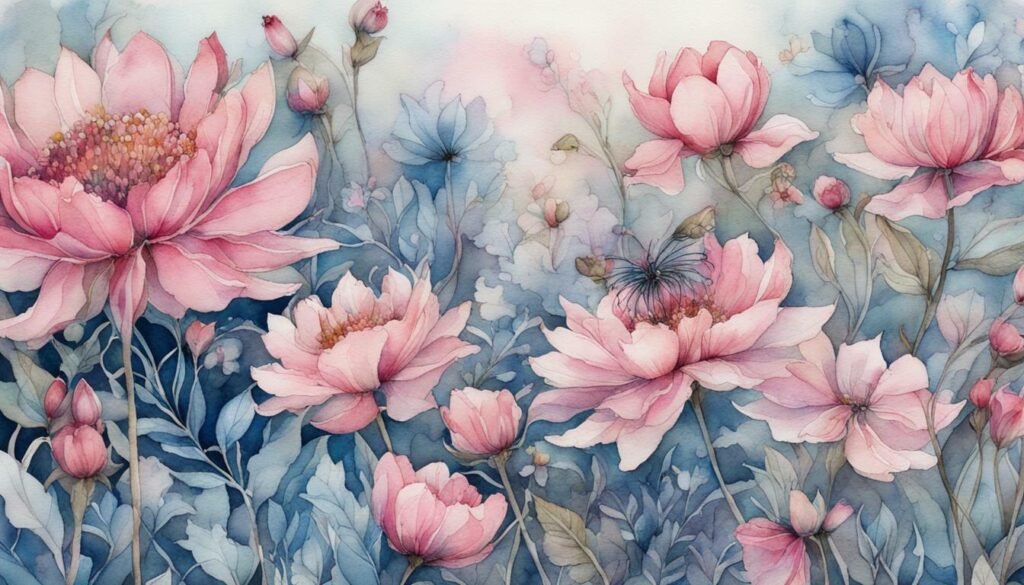
As with any art form, watercolor painting can present its own unique set of challenges. Whether you’re a beginner or a seasoned artist, you may encounter issues such as color bleeding, paper warping, or color lifting. Here are some tips and tricks to help you troubleshoot and overcome these common watercolor painting challenges:
- Color bleeding: To prevent colors from bleeding into each other, make sure each layer of paint is dry before adding another layer on top. You can also use masking fluid or painter’s tape to create boundaries between different areas of your painting.
- Paper warping: Wet watercolor paper can easily warp or curl, especially if you’re applying a lot of water or paint. To prevent this, use high-quality watercolor paper that is at least 140 lb in weight. You can also stretch your paper before painting by soaking it in water and then taping it to a flat surface until it dries.
- Color lifting: If you accidentally lift or remove paint from your paper, you can try rewetting the area and then gently blotting it with a paper towel. You can also use a lifting brush or a clean, damp brush to lift out color for added texture or highlights.
By overcoming these common challenges, you can improve your watercolor painting skills and create stunning artworks that you’ll be proud to display.
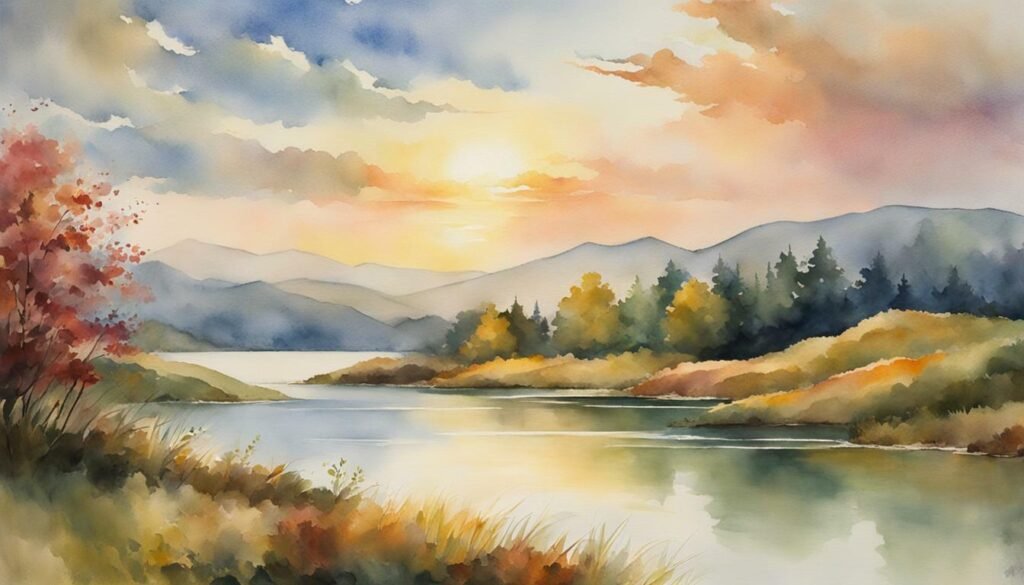
Once you’ve completed your masterpiece, it’s important to take the necessary steps to ensure its longevity and showcase it in the best possible way. Here are some tips and techniques to help you frame and preserve your watercolor paintings:
- Matting: Use a mat to separate the painting from the glass and prevent it from sticking or smudging. Choose a neutral-colored mat that complements the artwork.
- Glass: Use UV-resistant glass to protect your painting from fading or yellowing over time. Avoid using regular glass or Plexiglas, which can damage the artwork.
- Frame: Choose a frame that complements the artwork and enhances its beauty. Avoid frames that overpower the painting or distract from its focal point.
- Storage: Store your watercolor artwork in a cool, dry place away from direct sunlight or moisture. Use acid-free materials to prevent damage or discoloration over time.
- Cleaning: Use a soft, dry brush to gently remove dust or dirt from the surface of your painting. Avoid using water or cleaning solutions, which can damage the artwork.
By following these tips and techniques, you can ensure that your watercolor artwork remains vibrant and beautiful for years to come.
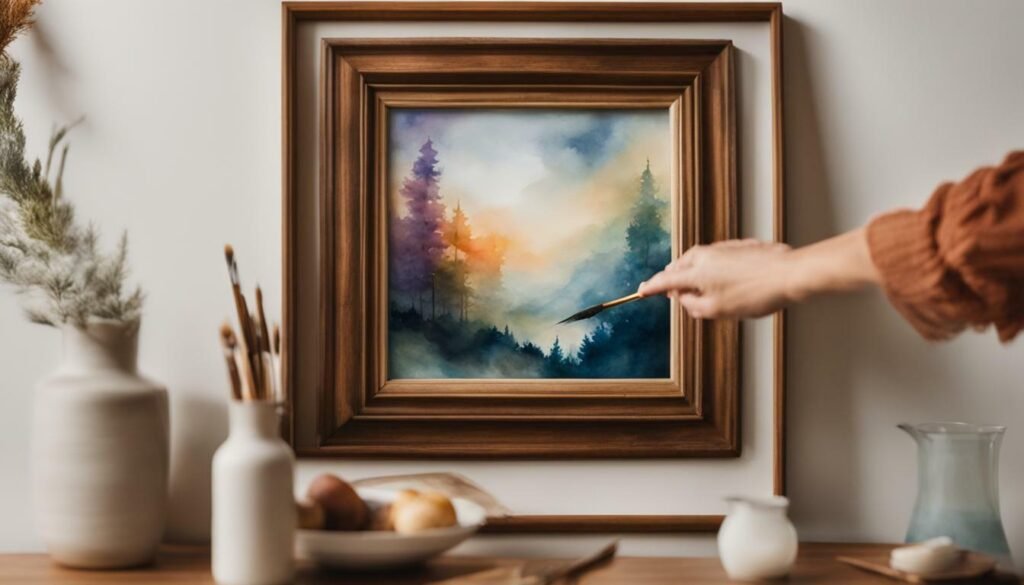
Congratulations on mastering the basics of watercolor painting! Now that you have a solid foundation, it’s time to take your skills to the next level and develop your unique artistic style. Here are some tips and inspiration to help you on your journey:
- Experiment with different techniques: Don’t be afraid to try new techniques and take risks with your paintings. Explore various watercolor techniques, such as salt and alcohol textures, resist techniques, and negative painting.
- Get inspired by other artists: Seek inspiration from other watercolor artists and their styles. Attend exhibits, galleries, and browse online portfolios and social media to see what resonates with you.
- Practice regularly: Consistent practice is essential to improving your watercolor painting skills. Set aside time each day or week to paint and experiment with new techniques and subject matter.
- Find your niche: Experiment with different subject matters and styles to find what resonates with you. Perhaps you enjoy painting landscapes, portraits, or abstracts. Find your niche and cultivate your skills in that area.
- Develop your own style: Once you’ve found your niche, it’s time to develop your own unique style. Incorporate your personal experiences and emotions into your artwork and experiment with different color schemes, brushstrokes, and compositional elements.
- Take workshops and courses: Consider taking workshops and courses to continue your education and learn from experienced artists and instructors. This will help you refine your skills and gain new perspectives on watercolor painting.
Remember, watercolor painting is a journey, not a destination. Embrace the process and enjoy the creative possibilities that watercolor offers. With consistent practice and experimentation, you’ll develop your skills and create beautiful and unique artwork.
FAQ
How can I improve my watercolor painting skills?
To enhance your watercolor painting skills, practice regularly, experiment with different techniques, and seek inspiration from other artists. Taking classes or workshops can also help you learn new techniques and refine your style.
What supplies do I need to start watercolor painting?
To begin watercolor painting, you will need watercolor paints, brushes, watercolor paper, a palette, water containers, and masking tape. It’s also helpful to have a pencil, eraser, and a mixing tray. You can find watercolor painting sets that include all the necessary supplies for beginners.
How do I create a smooth wash in watercolor?
To create a smooth wash in watercolor, wet your brush and load it with paint. Start from the top of the area you want to cover and gradually work your way down, applying the paint in even strokes. Keep your brush wet and avoid overworking the area to prevent streaks or unevenness.
Can I mix watercolor with other mediums?
Yes, you can experiment with mixing watercolor with other mediums such as ink, acrylic, or pastels. This can create unique effects and textures in your artwork. However, it’s important to test the compatibility of the materials and use appropriate techniques to ensure the longevity of your artwork.
How do I preserve my watercolor paintings?
To preserve your watercolor paintings, it’s important to frame them properly using archival materials. Use acid-free mats and backing boards, and consider using UV-protective glass or acrylic to prevent fading from sunlight. Avoid displaying your artwork in areas with high humidity or extreme temperature fluctuations.
